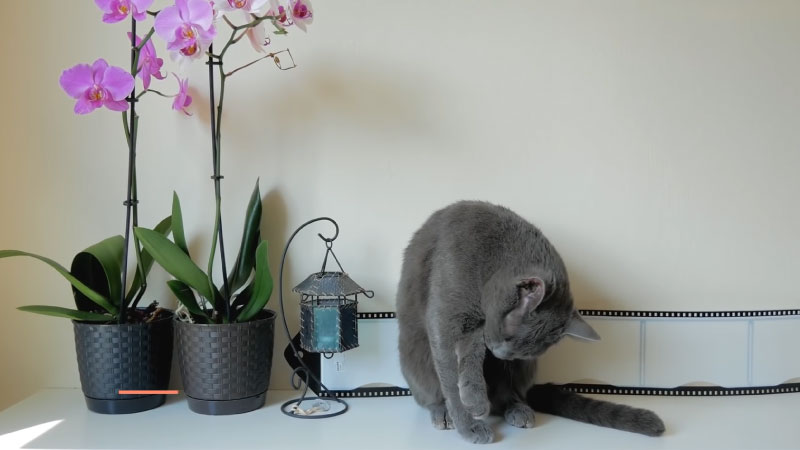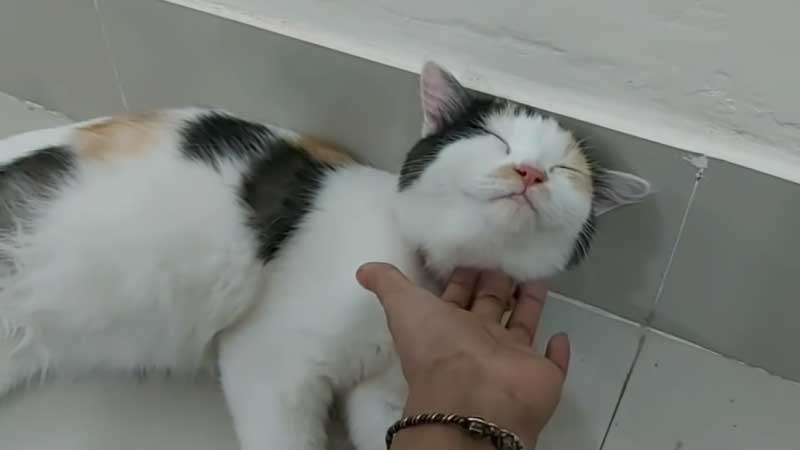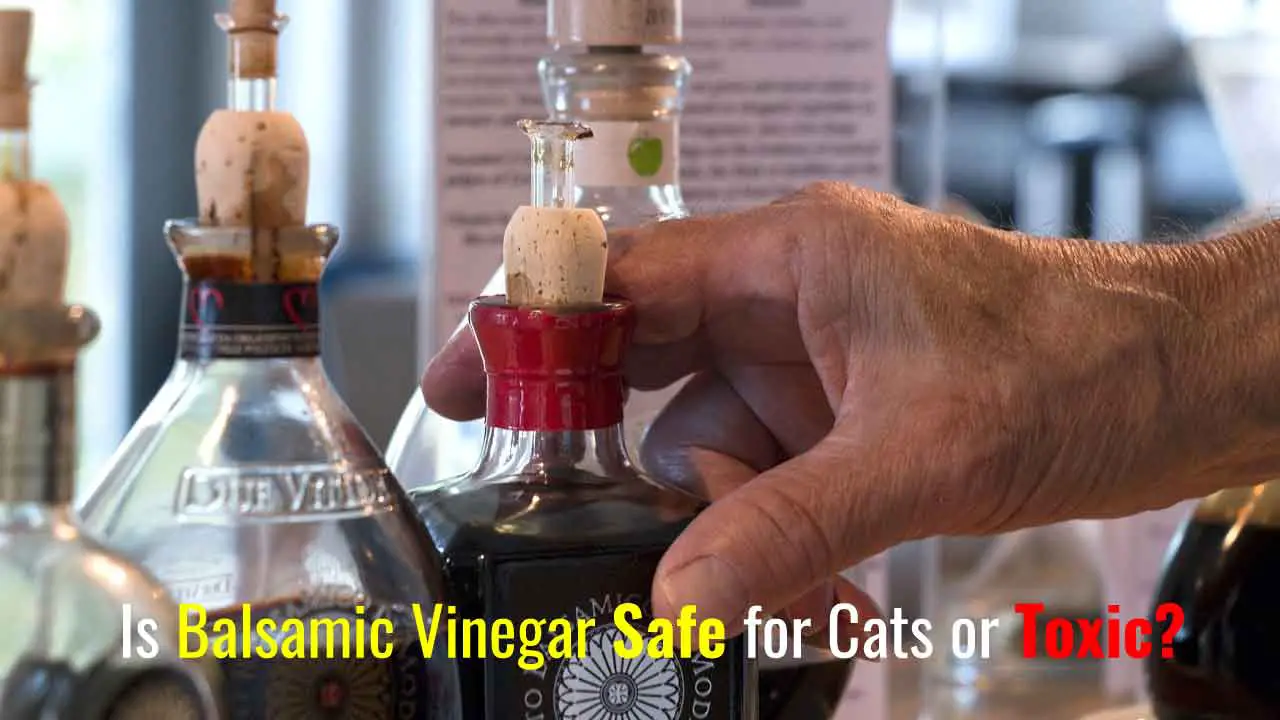Have you ever noticed your cat constantly grooming themselves, only to find fur scattered around the house? While it’s natural for cats to shed their fur, some pet owners may be alarmed when they witness their feline friend eating the fallen hair. This peculiar behavior raises an intriguing question: Why does my cat eat his fur after it falls off?
There are several reasons why your cat eats his fur, but the most common are nutritional deficiency, skin allergies or fungus infections, Pica syndrome, etc.
To uncover the reasons behind this curious habit, we must delve into the fascinating world of feline instincts and behaviors. Let’s dive into understanding this curious habit.
Why Does My Cat Eat His Fur After It Falls Off? (Reasons)

If your cat is eating its fur after it falls off, multiple underlying causes could exist. Let’s break down the potential reasons step by step:
Reason 1: Grooming Behavior
Cats are instinctual groomers. As part of their grooming process, they often lick themselves, and during this, they can sometimes swallow the loose fur. This is a natural behavior and not always a cause for concern unless it’s excessive.
Tongue Structure: A cat’s tongue is specially designed with hook-like structures called papillae that help with grooming. These can often trap loose hairs, leading them to be ingested.
Reason 2: Nutritional Deficiency
Cats might eat their fur, thinking it could provide some nutrients they might be lacking, even though fur doesn’t have any nutritional value.
Unbalanced Diet: A diet that doesn’t provide all the necessary nutrients might lead a cat to develop unusual eating habits, including consuming its fur.
Reason 3: Pica Syndrome
Pica is a behavioral condition where cats (or even humans) eat non-food items. This can range from eating things like plastic, rubber bands, fabrics, and, in some cases, their fur.
Underlying Causes: Pica can be caused by various factors, including dietary deficiencies, environmental factors, genetic predisposition, or even underlying medical conditions.
Reason 4: Stress and Anxiety
Just like humans, cats can also have behavioral responses to stress. Eating their fur can be one such manifestation.
Potential Stressors: Changes in the environment, a new pet in the house, alterations in their routine, or even a new family member can be potential stressors for a cat.
Reason 5: Skin Allergies or Fungal Infections

Problems like skin allergies, fungal infections, or parasites like fleas might cause discomfort. In an attempt to relieve this discomfort, cats might over-groom, leading to fur ingestion. Sometimes, gastrointestinal problems can result in behaviors like fur eating.
Reason 6: Boredom
Cats are naturally curious and active creatures. Without sufficient stimulation, they can become bored, leading them to develop habits like fur chewing and eating. An absence of regular playtime or engagement can also lead to such behaviors.
Reason 7: Habitual Behavior
Sometimes, if a cat starts eating fur for any of the reasons mentioned above, it can become a habitual behavior, even if the original cause (like stress or a dietary deficiency) has been addressed.
While occasional fur ingestion during grooming is typical for cats, consistent and excessive consumption can lead to several health implications. Let’s dive into the potential health risks associated with fur ingestion.
What Happens If Cats Eat Their Fur: Health Implications of Eating Fur

While occasional swallowing of fur during grooming is typical for cats, consistent and excessive consumption can lead to several health implications.
Hairballs (Trichobezoars)
When cats groom themselves, they swallow some fur. While much of this fur passes through the digestive system, some can accumulate in the stomach or intestines and form hairballs, frequent coughing, retching, or vomiting. Sometimes, you may observe tubular masses of hair in the vomit.
While occasional hairballs are regular, frequent hairballs can indicate excessive grooming or other underlying health problems.
Gastrointestinal Obstruction
Large amounts of ingested fur can lead to blockages in the intestines. This is a severe condition and requires immediate veterinary attention. Loss of appetite, vomiting, lethargy, and abdominal pain are the most common symptoms.
Gastrointestinal Irritation
Consumed fur can irritate the lining of the stomach or intestines, leading to inflammation or other digestive issues. Diarrhea, constipation, or other changes in bowel movements are the most common symptoms of gastrointestinal irritation.
Dental Problems
In rare cases, fur can wrap around a cat’s teeth, mainly if they’re chewing or biting at their fur frequently.
Symptoms: Bad breath, difficulty eating, or visible fur entangled around teeth.
Reduced Nutrient Absorption
Excessive fur in the digestive tract can interfere with the absorption of nutrients from food.
Symptoms: Unexplained weight loss, dull coat, or signs of malnutrition.
Skin Infections
If a cat is over-grooming and ingesting fur, it might also cause open sores or wounds on their skin, making them susceptible to bacterial or fungal infections.
Symptoms: Redness, swelling, foul odor, or visible sores
How Do You Prevent Your Cat from Eating His Fur After It Falls Off? (Solutions)

If you’ve noticed your feline friend eating its fur after it falls off, it’s crucial to address this behavior not only for their well-being but also to prevent potential health issues. Let’s delve into a step-by-step solution to this problem:
Solution 1: Recognize and Understand the Behavior
Before you take any action, it’s vital to recognize the difference between normal grooming and problematic behavior. Cats are known for their grooming habits, and sometimes, they might accidentally ingest a small amount of fur. However, if your cat seems to be deliberately eating large quantities of fur, then intervention is necessary.
Solution 2: Regular Grooming
Brush Daily: Brush your cat daily to remove loose fur and reduce the amount available for them to ingest. Regular grooming not only minimizes fur ingestion but also gives you a chance to check your cat for skin problems, lumps, or parasites.
Bathing: While many cats aren’t fond of water, occasional baths (using cat-specific shampoos) can further reduce loose fur, especially for long-haired breeds.
Solution 3: Offer a Balanced Diet
A nutritional imbalance can sometimes lead cats to eat their fur. Ensure your cat:
- Receives high-quality cat food that meets all its nutritional requirements.
- Has access to fresh water at all times.
- Receives occasional cat-safe treats and avoids feeding them human food unless it’s known to be safe.
Solution 4: Environmental Enrichment

Stress or boredom can sometimes lead to fur-eating behavior. In this case, you can do these things:
- Toys: Ensure your cat has plenty of toys to play with. Interactive toys, puzzle feeders, and toys they can chew on are excellent choices.
- Cat Furniture: Cat trees, scratching posts, and interactive elements in their environment can keep them occupied.
- Playtime: Spend time playing with your cat daily. Use toys like feather wands or laser pointers to engage their hunting instincts.
Solution 5: Provide Safe Alternatives
If your cat has a need to chew or consume, provide safer alternatives like cat grass or catnip. These can divert their attention from their fur and offer a safe outlet for their behavior.
Solution 6: Monitor for Pica
Pica is a condition where animals (and humans) eat non-food items. Fur-eating can be a symptom. If you suspect your cat has pica:
- Consult your veterinarian.
- Remove other potential non-food items they might ingest.
Solution 7: Reduce Stress
Identify and eliminate sources of stress. Common stressors for cats include:
- Changes in their environment.
- Introduction of new pets or humans to the household.
- Loud noises or disruptions.
Try using calming products like Feliway, a synthetic feline facial pheromone, to create a more comforting environment.
Solution 8: Regular Vet Check-ups
Routine veterinary check-ups can help spot potential health issues that might be causing the behavior. It also provides an opportunity to discuss concerns with a professional.
Solution 9: Consider Behavioral Therapy
If you’ve tried the above steps and your cat continues to eat its fur, consider consulting a veterinary behaviorist. They can provide more targeted strategies and therapies to address the issue.
Read Also: Is Blue Buffalo Cat Food Killing Cats?
FAQs
Why do cats groom themselves so much?
Cats groom themselves for cleanliness, to regulate their body temperature, and for comfort. It’s an instinctual behavior passed down from their wild ancestors.
Can eating fur harm my cat?
While occasional ingestion might not be harmful, regular consumption can lead to hairballs and digestive issues.
How can I help my cat stop eating its fur?
Regular grooming, dietary adjustments, providing an enriched environment, and consulting a vet are some ways to address this behavior.
Is fur-eating a sign of stress in cats?
Yes, it can be. Cats might consume their fur due to environmental changes, new pets, or other stressors.
Is there any nutritional value in the fur of cats?
No, fur doesn’t provide any nutritional benefits for cats.
Should I be worried if my cat is eating its fur?
While occasional fur ingestion might be accidental, if it’s a frequent behavior, it’s essential to consult a vet.
Final Remarks
It is not uncommon for cats to engage in the behavior of eating their own fur after it falls off. This behavior, known as fur grooming, can have various underlying reasons. It may be a result of excessive shedding, allergies, skin irritation, or even stress or anxiety.
While occasional fur grooming may not be a cause for concern, persistent or excessive fur consumption should be addressed by a veterinarian to rule out any underlying medical conditions. Regular grooming and providing environmental enrichment for your cat can also help reduce the likelihood of this behavior. Remember, if you notice your cat excessively eating their fur, consult with a professional to ensure their health and well-being.




